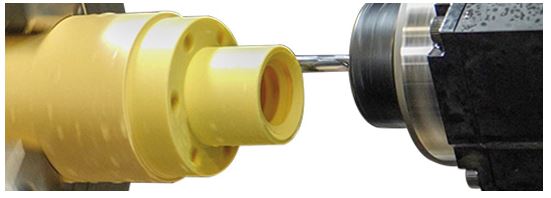From prototype to volume production: this is how you choose the right method
Sebastian | May 9, 2020
Not since the breakthrough of additive manufacturing processes, such as laser sintering and 3D printing, has a variety of tools been available for creating polymer components and parts. Now there are no limits to the imagination. The only problem is that thanks to 3D printing, dreams of plastic are facing a nasty surprise. Often it turns out that the object of desire cannot be produced in volume with the planned method. “What, we will never be able to mill this undercut. And then this contour with no corner radius?” “We can’t produce the surface like that at all”. Even small changes or aspects not considered in advance can severely affect tool and part costs afterwards.
Preparation is everything
What sounds trivial, is often forgotten by people in the development phases thanks to time and cost pressure. To avoid undesired correction loops and unanticipated costs, it is important to bear in mind the limits and special features of the different manufacturing procedures in advance, and during the early stages of the component design and material selection. Lets take a look at the most common procedures and their pitfalls.
The procedures at a glance:
Additive manufacturing

This generic term includes relatively new procedures, such as 3D printing (FDM, fused deposition modelling) or laser sintering (SLS, selective laser sintering). In this context, additive means that the material is applied in layers until the part is finished. These methods do not require any tools or moulds and are therefore especially interesting for prototypes or small volumes.
Mechanical processing
In mechanical processing, cutting tools are used on the parts. This includes for example machining, drilling, turning, looping. These processing procedures require previously programmed processing steps and carefully selected suitable tools. Once they have been adjusted, the processor only needs to think about the supply of the raw parts and the condition of the cutting tools. And even that is automatically controlled by modern, so-called processing centres nowadays. That way, larger quantities can also be produced economically. A further advantage is the large amount of possible processing tools, which enable very precise dimensions.

Injection moulding method
When you’d like a little more. Injection moulding is especially suitable for large quantities. After an initial investment in a suitable injection mould, several thousands of components can be produced in no time. With this, the ordering party benefits from the strengths of the mechanical processing, as the mould is usually produced mechanically. However, there are printed or sintered injection moulds nowadays – even made of plastic.

You should pay attention to these aspects at an early stage of the construction process
Expected quantity
Obviously, especially at the beginning, the quantity is derived from estimated or predicted sales figures. However, you should still realise in advance, what effects these numbers will have on the price in the respective procedure. Even is these should vary. This rule of thumb applies: use additive manufacturing for small quantities, mechanical processing for medium-sized batches of a few dozen up to several 1,000 pieces and injection moulding for large amounts. However, there are exceptions. These are due to the following aspects.
Stability and quality of surface
Depending on the manufacturing procedure, stability during stress and surface condition vary. Components made with additive manufacturing usually consist of layers and are rough. These layers are not equally stable in all directions.
Printed parts withstand loads better vertically to the direction of the layers than parallel. The surface of printed components is relatively rough and uneven, but it can be milled over or chemically smoothed. In contrast, mechanical parts can be smoothed with looping, for example. Without looping or milling, processed areas often have a hatching-like surface. It is also important to pay attention to feathering. For that, the material structure of bar stock – the basic material such as plates and round bars – is more homogenous and strong than that of parts manufactured with additive methods.
In the injection moulding procedure, the processing of the steel injection mould leads to very smooth surfaces. The surface of the parts is later covered with a sort of injection skin. At the same time, the material in the injection-moulded part is very homogenous due to the melting of the premixed granules. However, you should make sure that for example, wall thicknesses and radii are designed for injection moulding. That way, you can avoid form deviations, such as sink marks or torsions.
Part costs
There are big differences regarding the costs. A 3D printer is ready for use comparably quickly. Connect the filament spool, prepare print bed, upload 3D model, done. The installation and maintenance costs are low. The run time per part however is long, which results in a comparably high part price. With mechanical processing, the installation costs for the machine are often higher; however, it takes a lot less time to produce the part, sometimes even only minutes. With injection moulding, the injection mould costs low to high four or even five-digit amounts. In return, several parts can be manufactured at once within seconds.
The devil is in the detail
Unfortunately, these are all merely general rules of thumb. Even small details can completely mess up the product design, when it comes to manufacturing processes. The corner radius cannot be 1mm, but 0.1mm? Other miller required – plus €200. The undercut must be right there? Additional slider in the injection moulding tool – €1,500. Such cases do not happen every day, but often enough. To be sure to avoid these issues, it makes sense to include the processing partner of the corresponding department in the development at an early stage.
